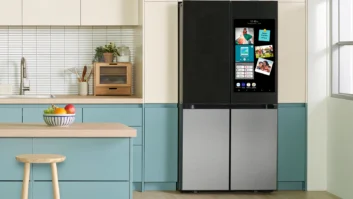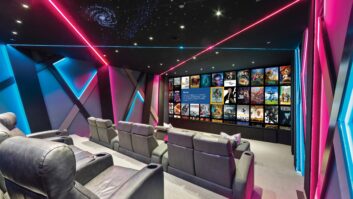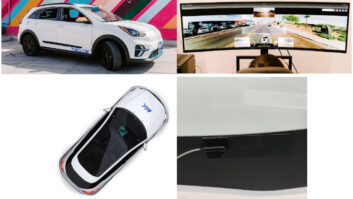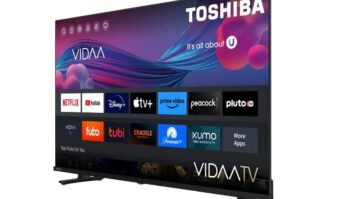LAS VEGAS— Toshiba America Consumer Products television marketing VP Scott Ramirez said at CES that the company has officially stepped away from rear-projection television based on Liquid Crystal on Silicon (LCoS) micro devices in favor of the popular and more-available Digital Light Processing (DLP) chips from Texas Instruments.
For the past two years, the company had touted LCoS-based televisions as the flagship products in its digital-television line, but chip shortages prevented Toshiba from delivering its 2003 models to market. For 2004, Toshiba plans to embrace DLP in a big way, Ramirez said.
He said Toshiba would introduce later this year an expansive DLP lineup using TI’s HD2+ high-definition TV chip and a light-engine system completely designed and built by Toshiba.
Although Ramirez declined to announce specifics, the company was reportedly planning to offer 10 DLP models in 2004. Ramirez said Toshiba intends to use DLP to take “a top three” market-share position in micro-device-based projection-television products.
Ramirez said Toshiba’s light-engine design will produce thin-cabinets, but not as thin as the under 7-inch cabinet depth of new DLP models announced by Thomson at the show. Thomson’s DLP HDTV sets will use a light engine developed by InFocus.
Toshiba also is moving ahead with plans to expand its LCD TV and plasma-display offerings, while continuing to stick with and build upon its direct-view CRT TV business.
Ramirez said that while other companies are pulling away from the direct-view category, Toshiba recognizes that a significant percentage of consumers will not race to embrace the newer and more expensive television display technologies. This will leave a huge demand for affordable digital television solutions as the
Federal Communications Commission’s mandate to end analog TV broadcasting draws closer.
“In 2004, we will continue our leadership position in direct view, where in 2003 we were a No. 2 market-share position leader,” Ramirez said. “If you look at the average price of television sets, historically, $300 to $400 has been what the average person has paid for a television set. I can tell you, you are not going to get a 30- or 40-inch flat panel television for $300 or $400 anytime soon. Those same people who are paying $300 to $400 aren’t going to spend $3,000 or $4,000 anytime soon.”
However, Ramirez said he does expect a continuing shift away from 4:3 direct view TVs to more 16:9 widescreen models, adding that widescreen CRT sales were up 103.8 percent in the last year.
Similarly, Toshiba will stick with and build upon CRT-based rear-projection television products, even as it ventures into DLP sets. Ramirez said CRT rear-projection — a category where Toshiba held a No. 3 market share position last month — represented the bulk of HDTV display sales since the launch of DTV, and will continue for several years as micro-device systems continue to grow and evolve.
“We need a model for every consumer,” Ramirez said. “We don’t abandon the consumer that only wants to spend $1,500.”













